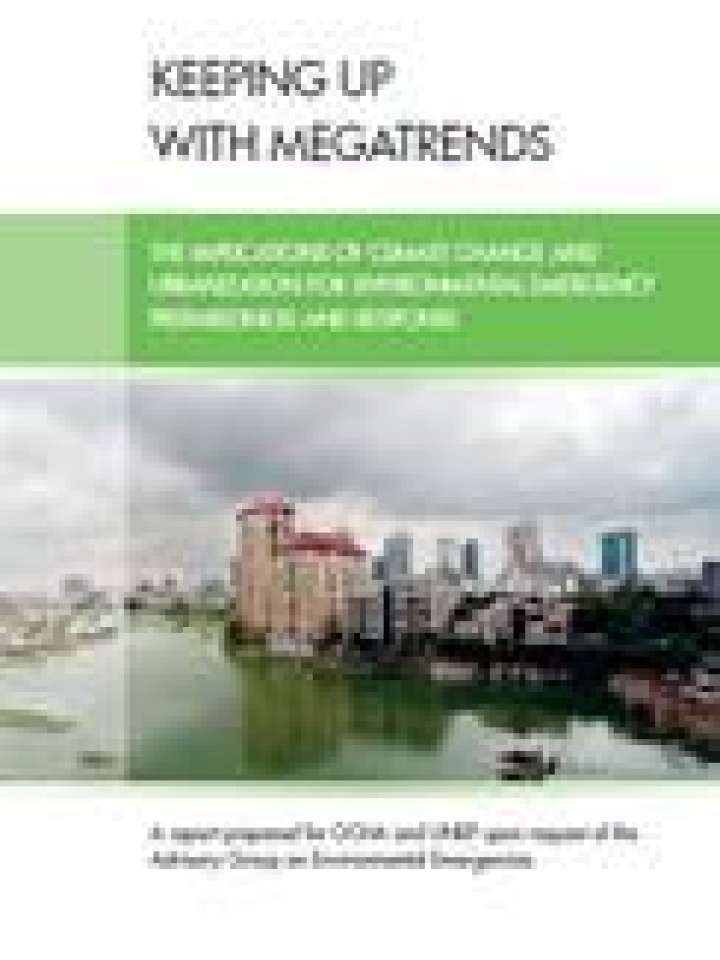Keeping up with megatrends: the implications of climate change and urbanization for environmental emergency preparedness and response
This study examines the effects of two megatrends – climate change and urbanization – on environmental emergencies. It considers how climate change and urbanization affect the scope and scale of emergencies. It argues that these trends are posing multiple challenges for emergency responders by overwhelming national and local-level emergency preparedness and depleting the capacity to prepare, respond, and rebuild.
It presents different opportunities for addressing these challenges through: (i) the greater utilization of the Environmental Emergencies Centre (EEC), which offers a programmatic approach to strengthening regional and national capacity to prepare for and respond to environmental emergencies; (ii) the use of new and existing tools that can forecast and share information related to environmental emergency preparedness and response; (iii) the increased efforts by OCHA and UNEP to improve integration of technological and industrial accident scenarios into national contingency planning; and (iv) improved integration of the environment as a cross-cutting issue in humanitarian response and relief efforts to help reduce future vulnerability to disasters and other emergency events.
While the study does not discuss disaster risk reduction (DRR), it makes numerous references to DRR policies and practices. Part I of this study addresses the megatrend of climate change, including an examination of current trends and implications for environmental emergency preparedness and response. It includes a case study on climate change and flood preparedness in Pakistan. Part II addresses the megatrend of urbanization and includes a case study on earthquake response and the implications for environmental emergency response in Haiti. Part III sets forth practical recommendations for improving the international framework for environmental emergency preparedness and response to cope with the impacts of climate change and urbanization on environmental emergencies. It includes a case study highlighting the intersection of climate change and urbanization with environmental emergencies and the implications for improved preparedness and response to drought, floods and food insecurity in Ethiopia.
Explore further
